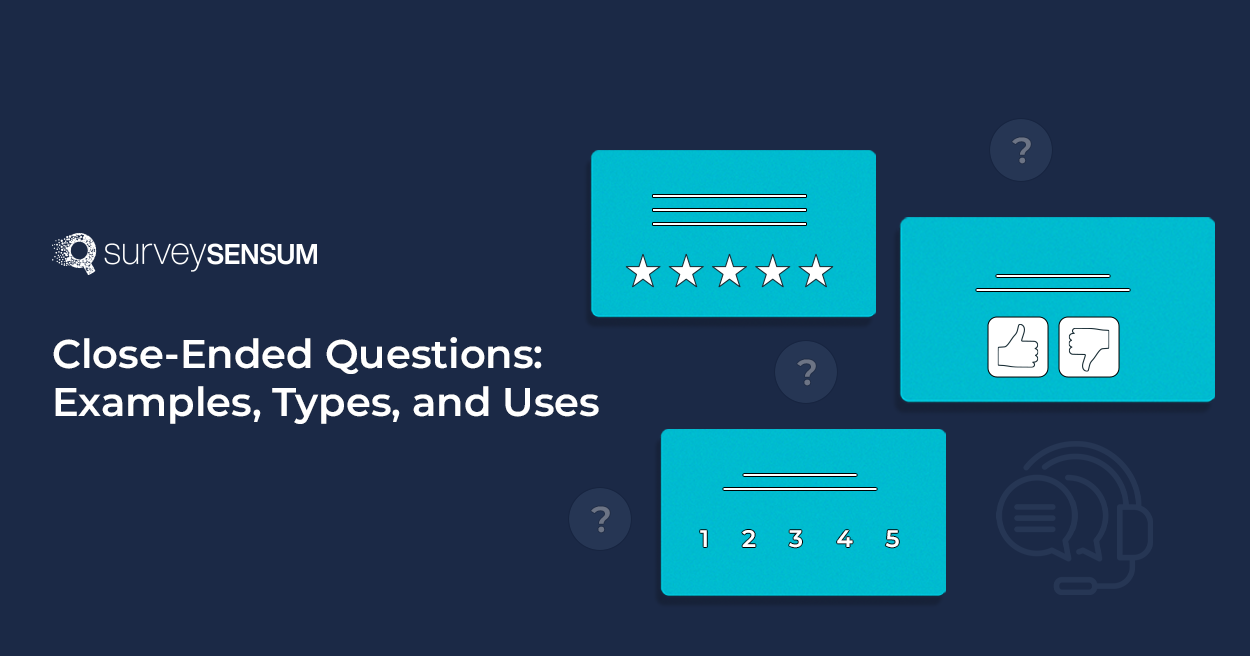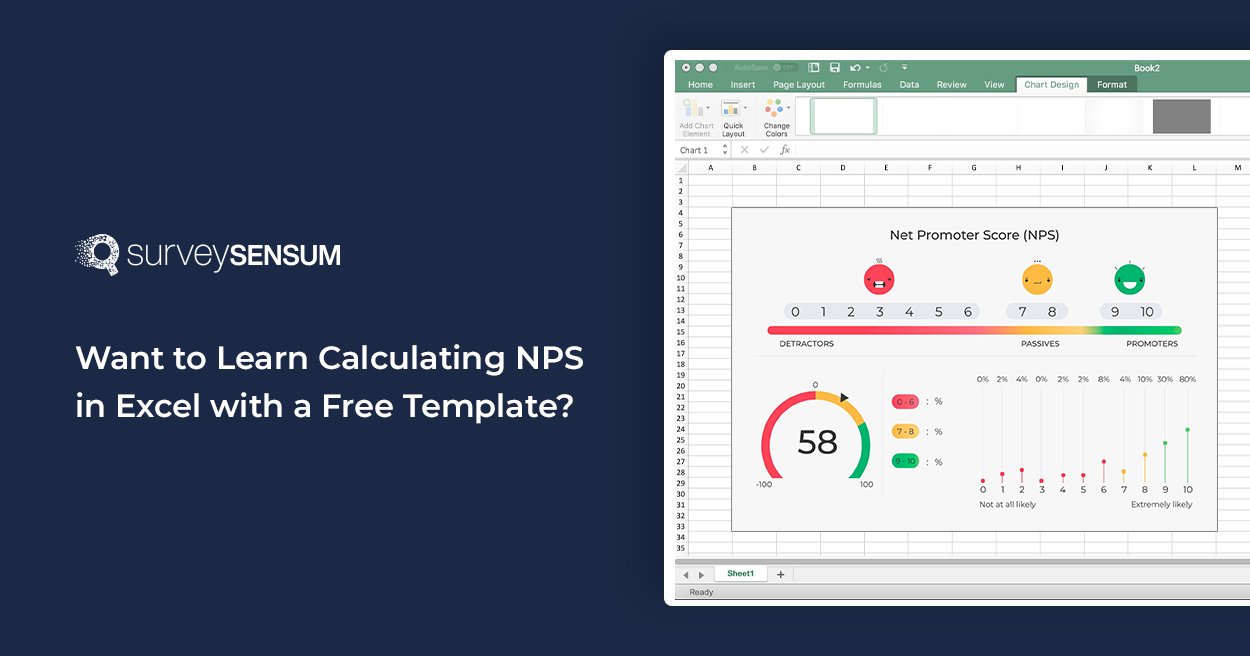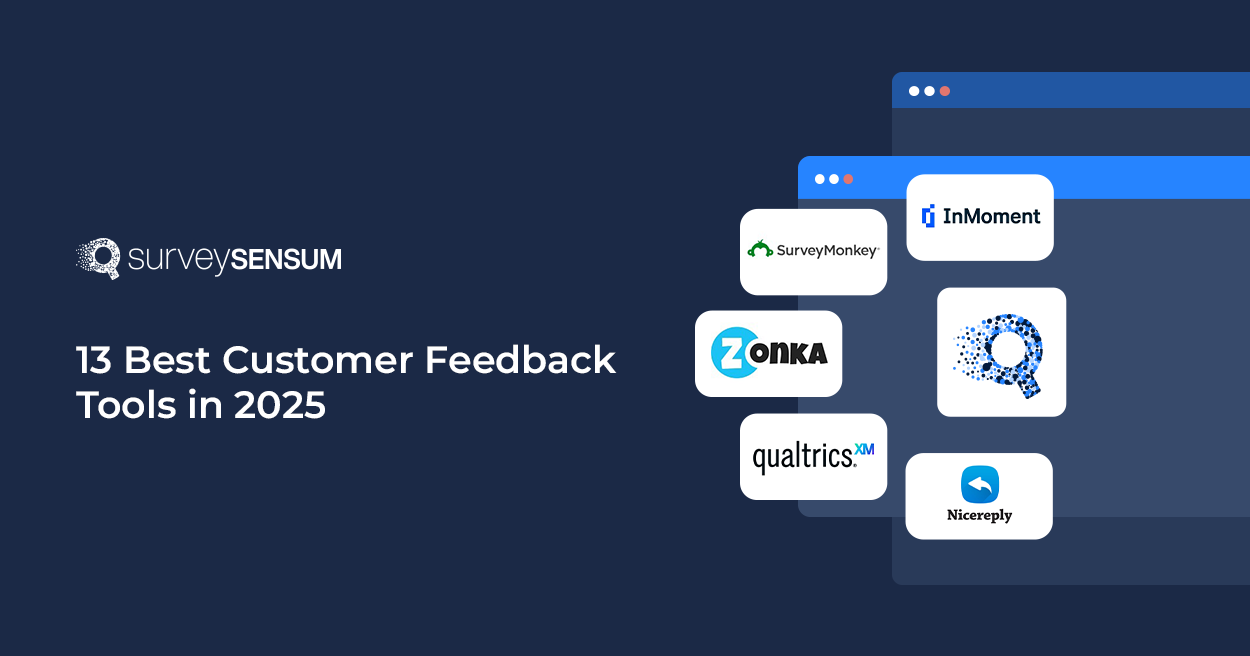
Have you ever received a survey where responses spiraled out of control, leaving you with more questions than answers?
Yes, we have all been there. But what if I tell you a simple way to overcome this challenge and get clarity without going through all the chaos?
Enter close-ended questions – this type of question can transform your survey design and create a streamlined feedback mechanism, making it easier to extract actionable insights.
What Are Close-Ended Questions?

Close-ended questions are defined as the type of survey questions that provide respondents with a set of predefined answers to choose from. These answers are short and provide businesses with direct responses. Unlike open-ended questions that allow respondents to express their views freely, close-ended questions keep the answers within a specific range.
But, Why Use Close-Ended Questions?
- Precision and Clarity: Imagine going through thousands of open-ended responses versus just tallying up yes and no answers – that’s the magic of close-ended questions. These types of questions cut through the chaos of open-ended feedback. They eliminate the ambiguity and give you clear and concise data.
- Easy to Analyze: Numbers don’t lie and that’s what close-ended responses do for you. You can cut through the noise and quantify the data when you have structured responses. This makes identifying top trends, patterns, complaints, etc so much simpler and straightforward.
- Consistency: All your respondents respond within the same rating scale, making it easier to extract insights and identify trending patterns. You get a consistent dataset, free from the nuances and varying interpretations of open-ended responses.
- Efficiency: Closed-ended questions are quicker to answer, making it more likely that respondents will complete your survey or questionnaire.
But can I send close-ended questions all the time? No.
When To Send Close-Ended Questions?
Now, if you are thinking: “I can probably use close-ended questions all the time, right?” Well, not quite. They shine brightest in certain scenarios:
1. To Gather Quantitative Data
Closed-ended questions are perfect for collecting quantifiable data that can be easily analyzed and compared. This is essential for drawing statistical conclusions and making data-driven decisions.
Example: “On a scale of 1 to 10, how likely are you to recommend our online event software to a friend?”
2. To Gather a Specific Set of Responses
When you need clear and specific answers, closed-ended questions limit responses to predefined options. This ensures that the data collected is consistent and relevant to your needs.
Example: “Which of the following features do you use the most?”
- User Interface
- Customer Support
- Functionality
- Price
3. To Launch Large-Scale Surveys
For large-scale surveys, closed-ended questions allow for quick and easy data collection, increasing the likelihood of completion and making it feasible to analyze a large volume of data efficiently.
Example: “Do you prefer online shopping over in-store shopping?” (Yes/No)
Launch surveys with both open and closed-ended questions to create a much more effective survey design and gather actionable insights effectively!
Also, do you know that close-ended questions come in different forms? Let’s find out!
Types and Examples of Close-Ended Questions
Here are the different types of close-ended questions and their examples.
1. Yes/No (Binary) Questions

Description: These questions require respondents to answer with a simple “yes/no”.
Example: “Did you enjoy your shopping experience today” (Yes/No)
2. Multiple Choice Questions

Description: These types of close-ended questions require respondents to choose one option from a list of predefined answers.
Example: “Which of the following products have you used?”
- Product A
- Product B
- Product C
- None of the above
3. Rating Scale Questions

Description: Respondents are required to rate the answer on a numerical scale of 1-5, 1-7, or 1-10.
Example: “On a scale of 1 to 5, how satisfied are you with our service?”
- Very Dissatisfied
- Dissatisfied
- Neutral
- Satisfied
- Very Satisfied
4. Likert Scale Questions

Description: In Likert scale question types, respondents are required to choose across a range of values, usually on a 5 or 7-point scale.
Example: “How strongly do you agree with the following statement: ‘Our product meets your needs’?”
- Strongly Disagree
- Disagree
- Neutral
- Agree
- Strongly Agree
5. Dichotomous Questions

Description: In this type of question respondents are required to select between two options.
Example: “Do you prefer coffee or tea?”
- Coffee
- Tea
6. Checkbox Questions
Description: Respondents are required to select multiple answers from a list of predefined options.
Example: “Which of the following features do you use? (Select all that apply)”
- Feature A
- Feature B
- Feature C
- Feature D
7. Drop-Down Questions
Description: In this type of question respondent is required to choose from multiple-choice options but the options are presented in a drop-down manner.
Example: “Select your country from the list below.”
8. Ranking Questions

Description: The respondents are required to rank a list of items in order of preference or importance.
Example: “Rank the following features in order of importance to you.”
- Price
- Quality
- Easy Onboarding
- Customer Service
Launch effective surveys that will guarantee a higher response rate with SurveySensum’s robust survey builder
Creating Balance: Open-Ended vs Closed-Ended Questions
While close-ended questions provide a simple, yet powerful approach to collecting valuable customer feedback, combining them with open-ended questions will provide you with a 360-degree understanding of your customer’s sentiments.
For example,
- Close-ended question: “Are you satisfied with our product?” (Yes/No)
- Open-ended questions: “Can you please provide us with details on what aspects of our product you liked/disliked the most?”
Closed-ended questions are best to get quantitative feedback on your answers, open-ended questions on the other hand, give you the reasoning, and the ‘why’ behind the customer feedback.
Now, asking these types of combination questions will provide you with a better understanding of your customer’s perception of your product.
Closed-Ended Questions Examples
Here are some questions to use in your close-ended survey.
1. Yes/No Questions
- “Did you find our website easy to navigate?” (Yes/No)
- “Would you consider purchasing from us again?” (Yes/No)
- “Did you receive your order on time?” (Yes/No)
2. Multiple Choice Questions
- “Which of the following devices do you use the most?”
- Smartphone
- Tablet
- Laptop
- Desktop
- “What is your favorite type of cuisine?”
- Italian
- Chinese
- Mexican
- Indian
- “How did you hear about our product?”
- Social Media
- Friend/Family
- Online Ad
- Other
3. Rating Scale Questions
- “On a scale of 1 to 5, how would you rate our customer service?”
- Very Poor
- Poor
- Average
- Good
- Excellent
- “How likely are you to recommend our product to others?”
- Not at all likely
- Extremely likely
- “How satisfied are you with the quality of our product?”
- Very Dissatisfied
- Dissatisfied
- Neutral
- Satisfied
- Very Satisfied
4. Likert Scale Questions
- “How strongly do you agree with the statement: ‘The checkout process was simple and quick’?”
- Strongly Disagree
- Disagree
- Neutral
- Agree
- Strongly Agree
- “How satisfied are you with the variety of products available on our website?”
- Very Dissatisfied
- Dissatisfied
- Neutral
- Satisfied
- Very Satisfied
- “How much do you agree with the following statement: ‘Our customer support team is responsive and helpful’?”
- Strongly Disagree
- Disagree
- Neutral
- Agree
- Strongly Agree
5. Dichotomous Questions
- “Do you prefer coffee or tea?”
- Coffee
- Tea
- “Are you a morning person or a night owl?”
- Morning Person
- Night Owl
6. Checkbox Questions
- “Which of the following features do you use on our app? (Select all that apply)”
- Notifications
- In-App Messaging
- Social Sharing
- Customizable Themes
Wrapping Up
Close-ended questions provide valuable and actionable insights to any business looking to improve its customer/employee experience and drive business growth. However, asking only close-ended questions is not an ideal solution, you also need to add a few open-ended questions so that your respondents can express themselves better.
But for that, you also need a robust feedback management tool, like SurveySensum, that will use advanced techniques like AI, machine learning, etc to create a streamlined feedback mechanism. The tool enables you to create an effective survey design with its user-friendly survey builder, pre-built survey templates, and an array of customizable question types. Not only that, the tool will also help you extract actionable insights and help you prioritize your actions based on their impact on your business performance.















